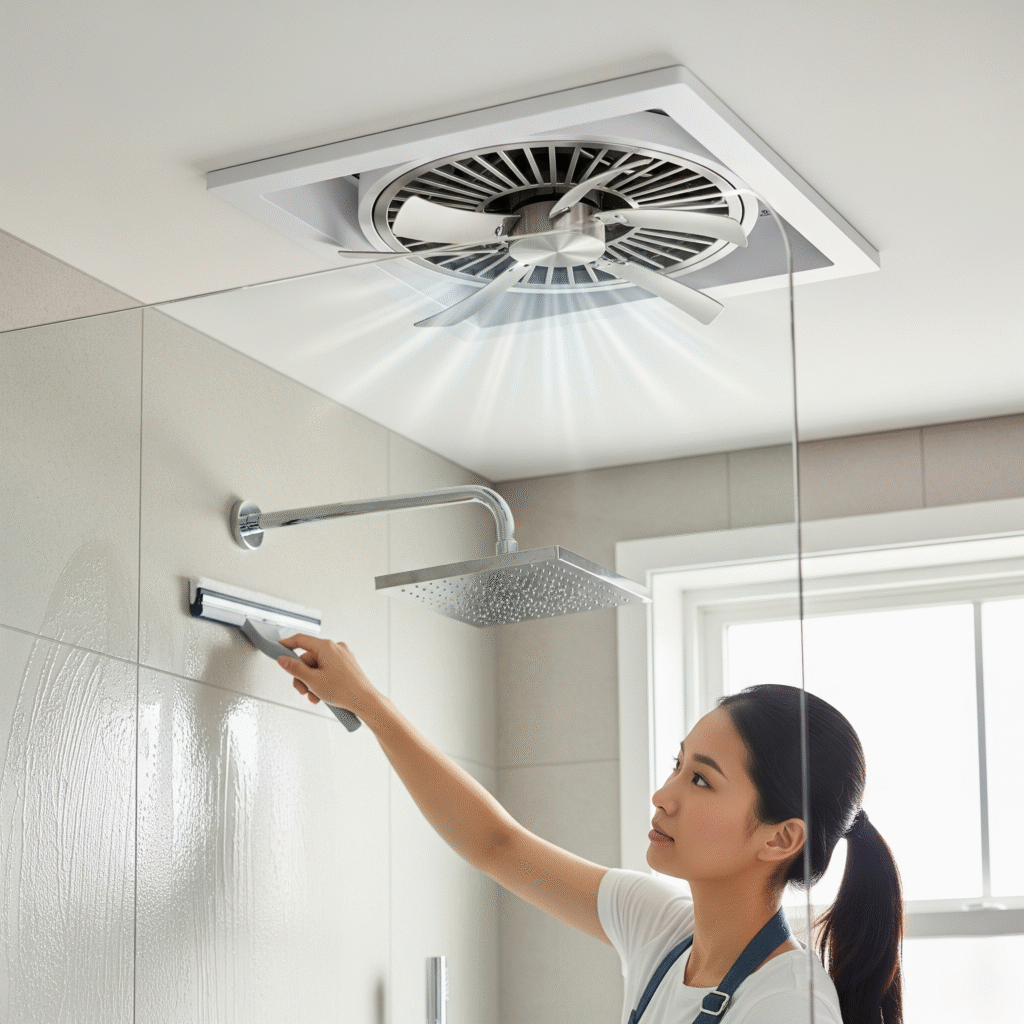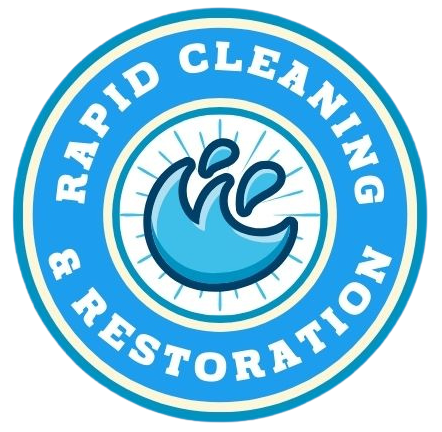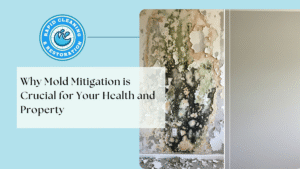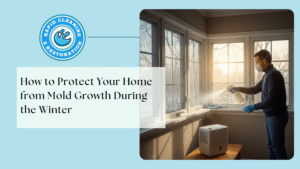When temperatures drop, most homeowners worry about heating bills and icy sidewalks, but winter also creates the perfect conditions for mold growth. Cold air outside, warm, humid air inside, and less ventilation can combine to make hidden mold thrive in basements, attics, and bathrooms. The good news? With a few smart habits and preventative steps, you can keep your home healthy and mold-free this winter.
Why Mold Loves Winter
Mold needs three things to grow: moisture, organic material (like wood or drywall), and the right temperature. While outdoor temperatures are cold, indoor conditions often create:
- High humidity from showers, cooking, and drying clothes indoors.
- Condensation on windows and walls due to temperature differences.
- Less fresh air circulation because windows and doors stay closed.
These factors turn cozy indoor spaces into ideal breeding grounds for mold.
1. Control Indoor Humidity
Aim to keep indoor humidity between 30 and 50%. Mold thrives in damp environments, so keeping the air dry is key.
How to do it:
- Use exhaust fans in kitchens and bathrooms.
- Run a dehumidifier in basements, laundry rooms, or other damp areas.
- Avoid drying wet clothes indoors if possible.
Pro tip: Invest in a digital hygrometer to monitor humidity levels easily.
2. Keep Air Moving
Mold loves stagnant air. Improve airflow by:
- Opening interior doors so warm air can circulate.
- Moving furniture away from walls to allow air behind it.
- Using ceiling fans on a low setting (clockwise) to push warm air down.
Even in winter, ventilating your home is important; try cracking a window briefly when cooking or showering.
3. Watch for Condensation
Condensation forms when warm, moist indoor air hits cold surfaces, like windows, exterior walls, or uninsulated pipes. Left untreated, this moisture can feed mold growth.
Tips to reduce condensation:
- Install double-pane or storm windows.
- Use window insulation film.
- Wipe down windowsills and window frames daily during very cold spells.
4. Seal and Insulate
Drafts not only waste energy but also cause temperature differences that encourage condensation.
Check and fix:
- Window and door seals.
- Attic insulation to prevent roof condensation.
- Basement walls and floors for cracks where water could seep in.
Proper insulation keeps surfaces warmer, reducing the risk of mold-friendly condensation.
5. Keep Bathrooms Dry
Bathrooms are the number-one mold hotspot, especially in winter.
Daily habits to prevent mold:
- Run the exhaust fan during and 20 minutes after showers.
- Use a squeegee to remove water from the shower walls.
- Leave the bathroom door open to help humidity escape.

6. Check Hidden Mold-Prone Areas
Winter mold often hides where you least expect it:
- Under sinks and behind toilets.
- In basements and crawl spaces.
- Around windows and on attic sheathing.
Inspect these spots monthly during colder months. Catching mold early makes removal easier and prevents damage.
7. Use Mold-Resistant Products
If you’re renovating or repairing this winter, consider:
- Mold-resistant drywall.
- Mold-inhibiting paint for bathrooms and basements.
- Flooring materials are less prone to moisture, like tile or vinyl.
These products add an extra layer of protection, especially in high-risk areas.
8. Keep Gutters and Downspouts Clear
Blocked gutters can overflow, directing water toward your home’s foundation. In winter, melting snow followed by freezing temperatures can lead to ice dams, trapping moisture on your roof.
Maintenance tip:
- Clear leaves and debris from gutters in late fall.
- Ensure downspouts extend at least 3–6 feet away from the foundation.
9. Use Dehumidifiers Strategically
A dehumidifier is especially useful in:
- Unheated basements that feel damp.
- Laundry rooms where dryers add moisture.
- Rooms where condensation regularly appears.
Empty the water tray regularly and clean the unit’s filter to keep it working efficiently.
10. React Quickly to Leaks
Even small leaks can cause big mold problems in winter when moisture evaporates slowly.
- Fix dripping faucets and pipes immediately.
- Dry wet materials (like rugs or towels) within 24–48 hours.
- Don’t ignore wet spots on ceilings or walls; they could signal hidden leaks.
Health Risks of Winter Mold
Mold spores can cause:
- Allergies and asthma flare-ups.
- Chronic sinus issues.
- Eye, skin, and throat irritation.
Keeping your home mold-free isn’t just about appearance; it protects your family’s health, especially during winter when you spend more time indoors.

Conclusion: Stay Dry, Stay Healthy
Winter increases the risk of mold, but with a few proactive steps, controlling humidity, sealing leaks, insulating, and cleaning regularly, you can keep your home dry and mold-free. By making mold prevention part of your winter home maintenance routine, you protect not only your property but also the health of everyone who lives there. Contact us today!





